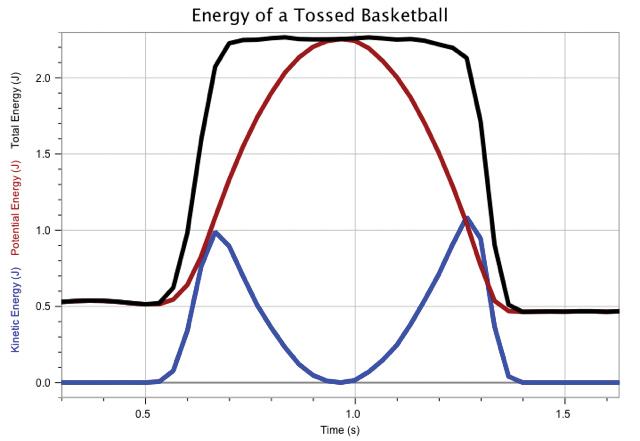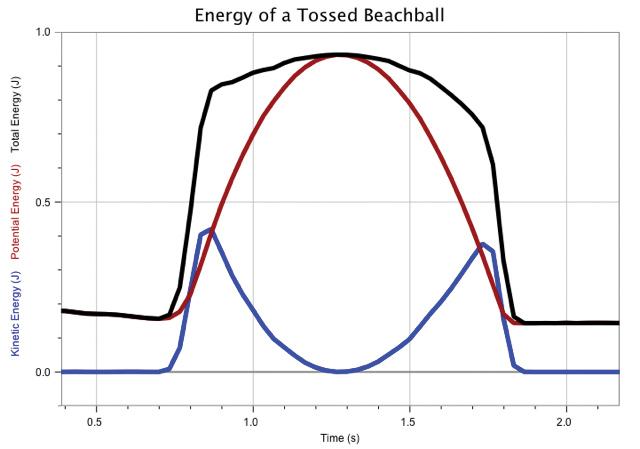While performing an experiment from the Physics with Vernier lab book, “Energy of a Tossed Ball,” Kathy Morello and her students from St. Joseph’s Academy in Baton Rouge, LA found some perplexing results. In the experiment, a Motion Detector is used to measure the position and velocity of a ball tossed vertically. The relative quantities of gravitational potential energy (GPE) and kinetic energy (KE) are compared to the total mechanical energy (TME). Usually, we see that GPE increases as the ball rises and decreases as the ball falls, while the KE follows an inverse pattern. During the period the ball is in the air, the TME is generally constant (although frictional forces can cause the TME to decrease noticeably in some cases).
Morello and her students found precisely these results until they performed a trial with a beach ball. Unexpectedly, students found that the TME increased as the ball rose, an apparent increase in energy! Have they violated the law of conservation of energy? Where did this extra energy come from? Was there something wrong with the way they performed their measurements?
After some initial investigations, in which I was able to repeat Ms. Morello’s results, I found that this question will likely lead to interesting teaching opportunities and perhaps new areas for independent student investigation.


